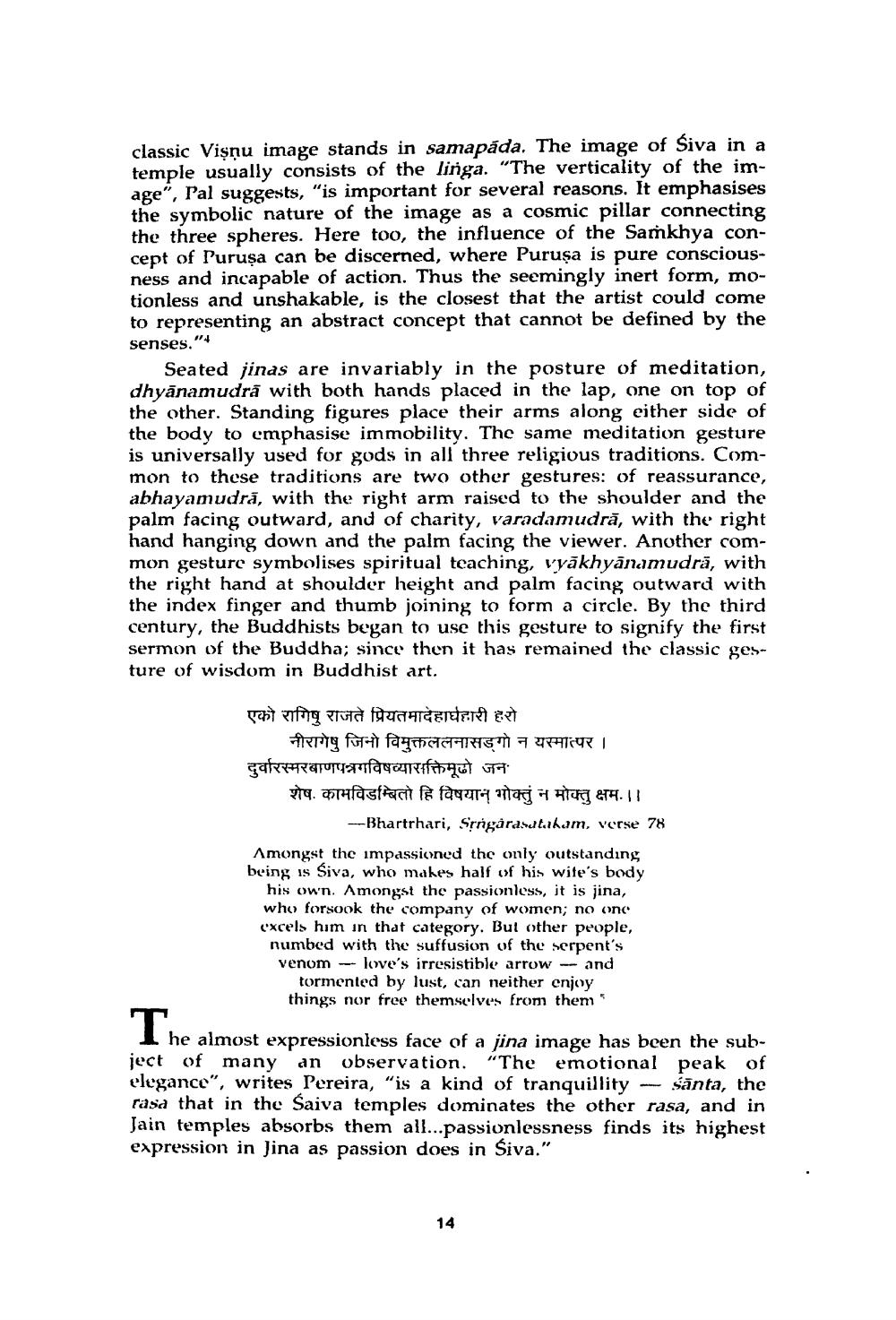________________
classic Viṣņu image stands in samapada. The image of Siva in a temple usually consists of the linga. "The verticality of the image", Pal suggests, "is important for several reasons. It emphasises the symbolic nature of the image as a cosmic pillar connecting the three spheres. Here too, the influence of the Samkhya concept of Purusa can be discerned, where Puruşa is pure consciousness and incapable of action. Thus the seemingly inert form, motionless and unshakable, is the closest that the artist could come to representing an abstract concept that cannot be defined by the
#A
senses.
Seated jinas are invariably in the posture of meditation, dhyanamudra with both hands placed in the lap, one on top of the other. Standing figures place their arms along either side of the body to emphasise immobility. The same meditation gesture is universally used for gods in all three religious traditions. Common to these traditions are two other gestures: of reassurance, abhayamudra, with the right arm raised to the shoulder and the palm facing outward, and of charity, varadamudra, with the right hand hanging down and the palm facing the viewer. Another common gesture symbolises spiritual teaching, vyākhyānamudrā, with the right hand at shoulder height and palm facing outward with the index finger and thumb joining to form a circle. By the third century, the Buddhists began to use this gesture to signify the first sermon of the Buddha; since then it has remained the classic gesture of wisdom in Buddhist art.
एको रागिषु राजते प्रियतमादेहार्धहारी हरो
नीरागेषु जिनो विमुक्तललनासड्गो न यस्मात्पर । दुर्वारस्मरबाणपन्नगविषव्यासक्तिमूढो जन
शेष कामविडम्बितो हि विषयान् भोक्तुं न मोक्तु क्षम. ।। -Bhartrhari, Sṛngarasatakam, verse 78
Amongst the impassioned the only outstanding being is Siva, who makes half of his wife's body his own. Amongst the passionless, it is jina, who forsook the company of women; no one excels him in that category. But other people, numbed with the suffusion of the serpent's venom love's irresistible arrow - and tormented by lust, can neither enjoy things nor free themselves from them
The almost expressionless face of a jina image has been the sub
ject of many an observation. "The emotional peak of elegance", writes Pereira, "is a kind of tranquillity Santa, the rasa that in the Saiva temples dominates the other rasa, and in Jain temples absorbs them all...passionlessness finds its highest expression in Jina as passion does in Śiva."
14




